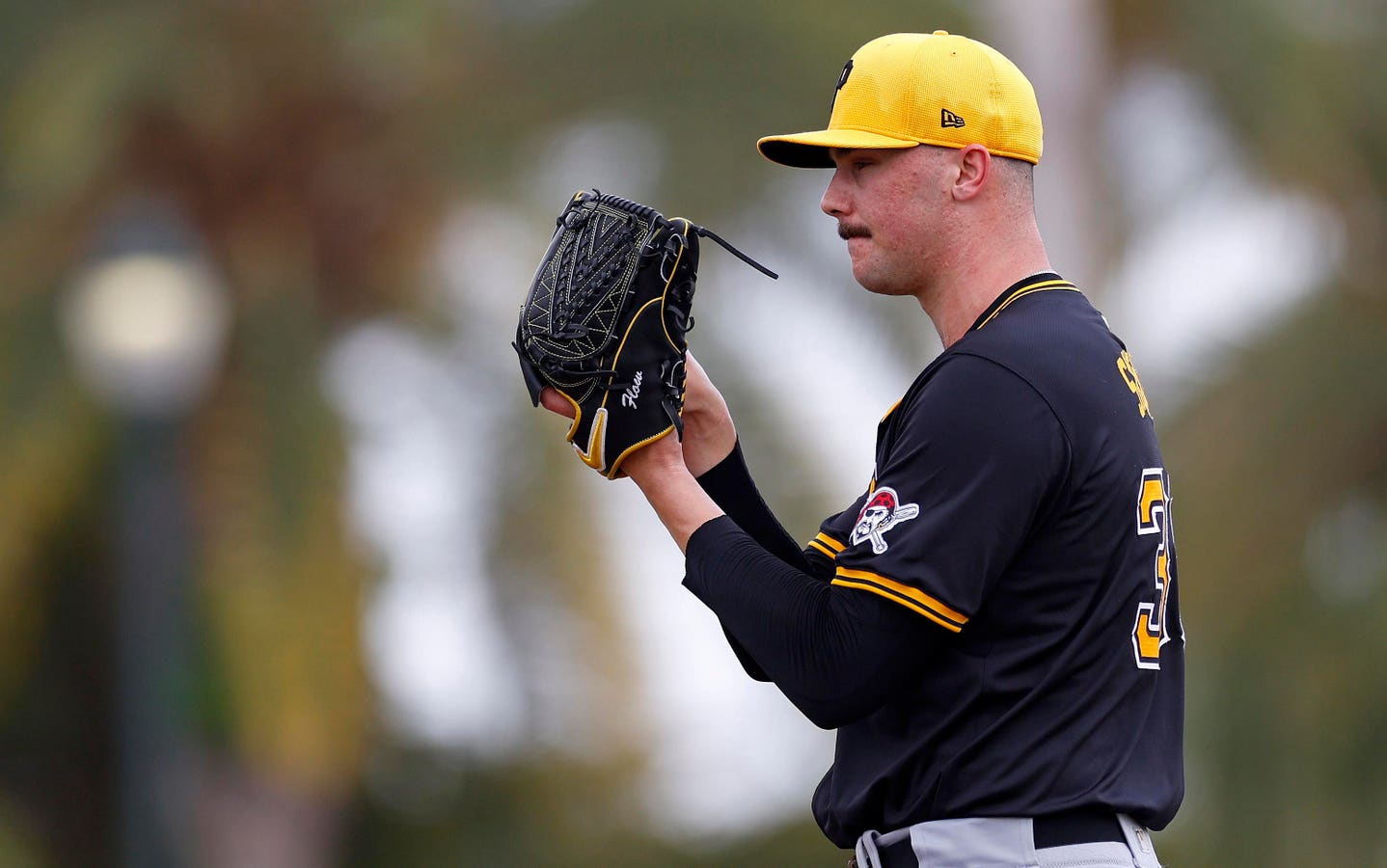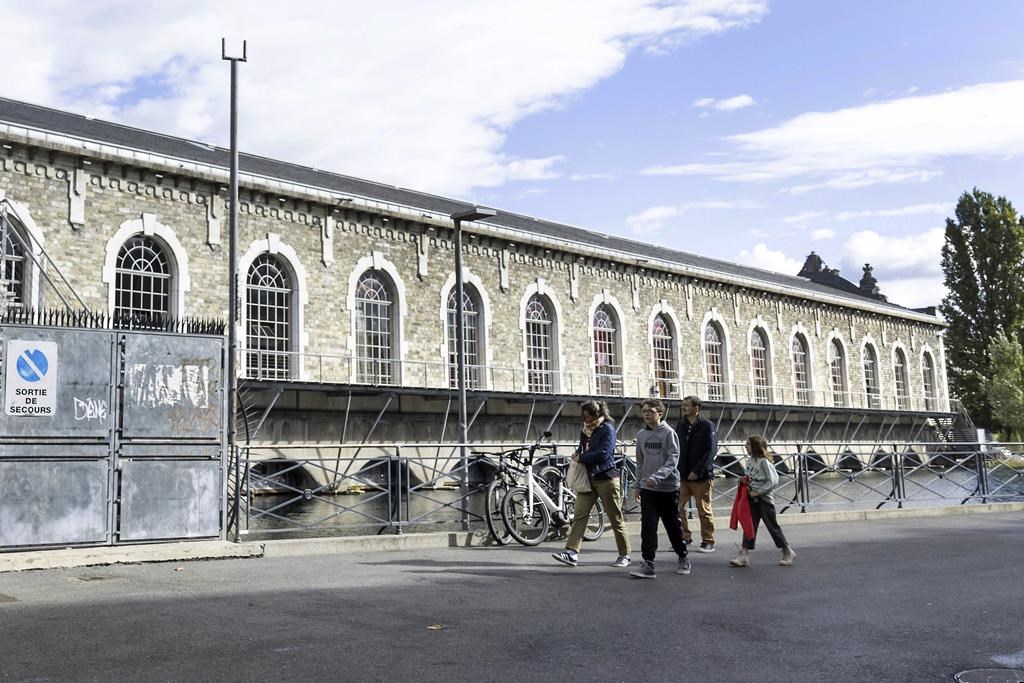SARASOTA, FLORIDA – FEBRUARY 29: Paul Skenes #30 of the Pittsburgh Pirates pitches during a spring … [+]
Paul Skenes, the number-one pick in the 2023 MLB draft, is now set to make his major-league debut for the Pittsburgh Pirates against the Chicago Cubs on May 11, after dominating Triple-A to the tune of a 0.99 ERA, 0.91 WHIP and 45 strikeouts across 27.1 innings.
There were significant calls for the Pirates to bring him up sooner, particularly as the team exceeded expectations to open the season and minor-league hitters proved unable to pose a real challenge. But as the most prolific hurler in the college ranks last season, pitching more than 122 innings en route to a national championship with Louisiana State University, there has been an obvious load-management component to holding off on his debut.
Whatever the reason for its timing, Skenes’ time in the minors did not just rest his arm. It has also now made it impossible for him to accrue the 172 days of big-league service time required to qualify for a full year in 2024. Had the Pirates called him up last month and he had accrued the necessary days, they would have “lost” a year of control on his contract — a season that could very well be worth ten figures or more when the time comes. Now, he likely won’t be eligible to hit free agency until 2030, rather than in 2029.
Per the collective bargaining agreement reached in 2022, Skenes might still earn his full year of service time if he finishes in the top-two for National League Rookie of the Year Award voting. But the Pirates can be confident that won’t happen in the 25 or so starts Skenes might make.
Current odds have Skenes in sixth place in the voting (though this is before he’s made a big-league start), behind a pair of pitchers who made their professional debuts in Japan, Shota Imanaga and Yoshinobu Yamamoto, as well as his own teammate, Jared Jones, who has a 2.63 ERA and 52 strikeouts across seven starts already.
Speaking with ESPN’s Jeff Passan, Pirates general manager Ben Cherington dismissed speculation that the team was intentionally holding Skenes back in an effort to retain a season of club control.
“I really don’t believe it’s played any role in this case. I really mean this,” Cherington said. “We decided in spring training that … we wanted to build the volume more slowly than an established major league starter would. Once we made that decision, functionally, it has to start in the minor leagues.”
What Are The MLB Rules For Rookie Contracts?
Like many of its rules and norms, MLB’s standards for rookie contracts are complicated and seem increasingly anachronistic.
Players who are drafted domestically are subject to specific contract parameters based on where they are selected. The first three years of the contract are “pre-arbitration” years, during which a team can pay them near the league minimum regardless of what the open market might determine as their value. In the subsequent years, the player is eligible for salary arbitration, a process by which a third-party panel steps in if the player and team cannot agree on a salary figure.
After six or seven years, players are typically eligible to become free agents and receive contract offers as determined by the open market of MLB teams competing with one another for his services.
In comparison, NBA players reach restricted free agency following their fourth year of service. All drafted NFL players receive four-year contracts. The sports are very different, and MLB players can negotiate their signing bonuses and don’t have to sign with the teams that select them. But it can seem as if the best MLB draftees are not rewarded as well as their equivalents in other major sports or even their international counterparts who come to MLB.
How Much Might Paul Skenes Earn In Future Free Agency?
Upon being drafted, the Pirates gave Skenes the largest-ever bonus at $9.2 million as determined by his “slot value.” Victor Wembanyama, the first overall pick in the 2023 NBA draft, received a four-year, $55 million contract with $24.9 million guaranteed. Wembanyama can test free agency in 2028, while Skenes will almost certainly have to wait until 2030.
Even a single year of free agency could be highly valuable to Skenes, particularly as he’s a high-velocity fastball thrower whose continued health will be central to his future earnings. At least one scout has said Skenes is the best college pitcher since Stephen Strasburg. After a series of deals with the Washington Nationals, Strasburg eventually earned a seven-year, $245 million extension from the team as he opted out for free agency with 10 years of service time.
Or take Yamamoto for instance. As an international free agent at 25 years old, he earned a 12-year, $325 million deal from the Los Angeles Dodgers just a few months after Skenes was drafted — the highest-ever total for a pitcher. After a three-season college career at Air Force and Louisiana State, Skenes may not be able to test free agency until he is 27 years old.
Writing for Baseball America, editor J.J. Cooper outlined the case that Skenes might have received a $50 million to $100 million signing bonus had he been a free agent instead of a draftee.
Ultimately, it’s impossible to gauge what the market will look like for Skenes in 2030 and how much he might have lost without the chance to test the market in 2029. But his current trajectory suggests he would have been in line for a significant payday as a free agent coming into this season and could very well earn more than $10 million per season if and when he finally hits free agency.
According to Passan, Skenes agreed with the Pirates’ plan to start him in the minor leagues and, even from a purely financial perspective, the best outcome is for him to hold off on the big leagues until he is truly prepared for a long and productive career. But it’s hard to understand why he’s ready now, as opposed to just 29 days ago, when he would have had a chance to meet the service-time requirement. Depending on how things go, each of those days in the minors might cost him — or save a future team that signs him — millions.
If nothing else, the early career of last year’s number-one draft pick suggests the MLB should take a new look at the “control” that teams can exact on their best players, the dichotomy between international free agents and college draft picks or the uneven fiscal factors at play that could shape the careers of its brightest young superstars.





